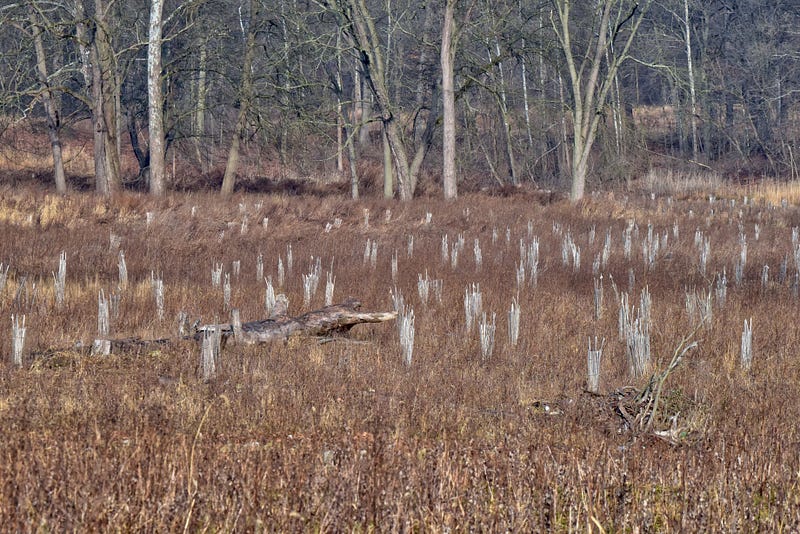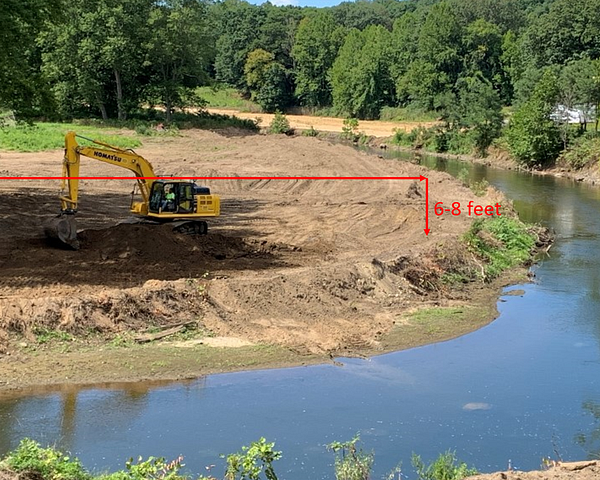Katelyn Freil, Marketing Specialist

With the onset of spring and April showers that go with it, park visitors are guaranteed to see rushing waterways. Rainwaters flow into streams and collect in our rivers like the Cuyahoga, which weave and dance throughout the landscape.
In the Valley View Area of Cascade Valley Metro Park, the Cuyahoga River is moving in renewed ways thanks to the restoration of its flood plain. The flood plain is an important component of any landscape. It holds water during high water events, supports a healthy ecosystem and prevents flooding downstream.
Read on to learn more from Mike Johnson, chief of conservation for Summit Metro Parks, about the importance of flood plains, the restoration of Valley View and how you can support our waterways from your back yard.

Everyone lives in a flood plain.
As Johnson explains, rivers exist as part of a continuum in our landscape.
“People tend to think that rivers begin and end where the water is, and that rivers are not part of the land,” Johnson says. “I tell people, we all live in a river. We just live in the dry part.”
The area of low ground adjacent to a river is the flood plain, and it is dry most of the time. During events like storms or heavy snow melt, water flows into the river from the watershed — the area of land around the river from which water drains. This causes water levels in the river to rise, filling the adjacent flood plain with it.
Flood plains are valuable to both humans and wildlife.
During flooding events, rivers flow much faster than normal. In contrast, flood plains are slower moving, providing a safe haven for fish who would otherwise be forced downstream during this time. Additionally, certain fish may lay eggs in the safety of a flood plain, while others will inhabit the roots of trees embedded into the sides of the river.
Flood plains also provide security for humans, but in a much different way. During the worst parts of a storm, water is stored in flood plains until it can recede by slowly flowing back into the river or seeping into the ground. This prevents water from rushing downstream and inundating other, more developed areas.
“When we leave our designated flood plains alone and allow them to exist in equilibrium with their river, flooding in our communities tends to be less of a problem,” Johnson says.

Development over the past 100 years or more has severely impacted our flood plains.
Valley View is an excellent example of how landscapes have changed to suit different needs over the years. Himelright Farm operated on this land from 1887 to 1956 and was Akron’s last working dairy farm. Soon after, the land served as a golf course for nearly 50 years.
Many adjustments were made over the years to prevent water flowing into the flood plain and affecting business. These adjustments included dredging material to make the riverbed larger and building levees along the river corridor to channel water downstream. In response to these adjustments and development in the greater watershed, the Cuyahoga River has eroded down, widened its banks and weaved side to side in an effort to establish a new flood plain.
“Rivers respond to the watershed. If you change the watershed, the river changes and adapts to that watershed,” Johnson says. “In a lot of areas where we have erosion, it’s really just the river trying to erode a new flood plain.”
Because of the critical built infrastructure now part of today’s environment, allowing the river to do this is not always possible. However, this type of infrastructure doesn’t exist in Valley View, which made it the perfect place for restoration of the Cuyahoga River’s flood plain.


There are two main approaches to restoring a flood plain.
The first is to create a low-head impediment, or a weir, within the river. This backs up the flow of water into the riverbanks to create a flood plain without interrupting travel for fish.
The second approach, used by Summit Metro Parks in Valley View, requires lowering the adjacent banks and surrounding area to create a floodplain at the current base-level of the river. Levees previously created to contain the river, preventing it from creating and accessing a new floodplain, were removed and a 60-acre area adjacent to the riverbanks was excavated 6–8 feet down.
While minor adjustments are still being made, this restoration process took five years to complete and the Cuyahoga River now has full access to its flood plain in this area.

You can support healthy flood plains in your own back yard.
During storms, water that can’t permeate the ground eventually flows into the river. This can include the water that rushes off your roof, down drainpipes and through storm sewers. By cutting back the amount of water that flows through our storm drains, we cut back on the amount of water our rivers and streams must process.
“As individuals, probably the best thing you can do is intercept your own stormwater,” Johnson says, and there are multiple ways to do this.
Try installing a rain barrel to collect water for growing your garden or planting a rain garden full of native species to soak up and contain water. Another option is to disconnect your downspout to allow rainwater to flow into your yard and drain naturally into the land. Before doing so, make sure to check your local regulations and ensure water will not flood your neighbors’ yards!
To learn more about flood plains and how you can make a difference in your own back yard, visit a free, naturalist-led program, stop by SMP nature centers to see water infrastructure in action or try visiting parks like Valley View Area to witness the restored land for yourself. You never know what you might see while taking in the views!